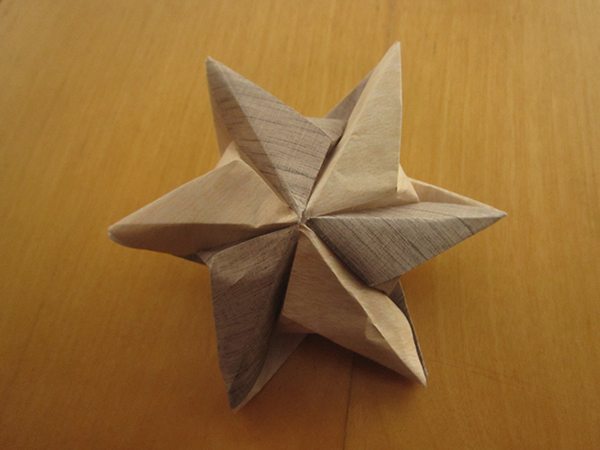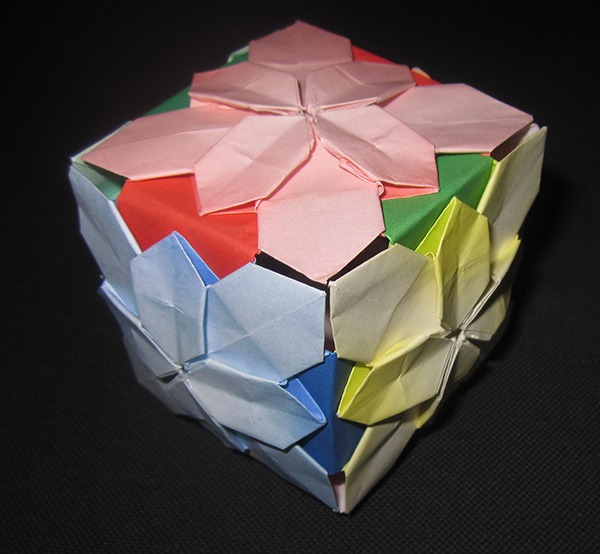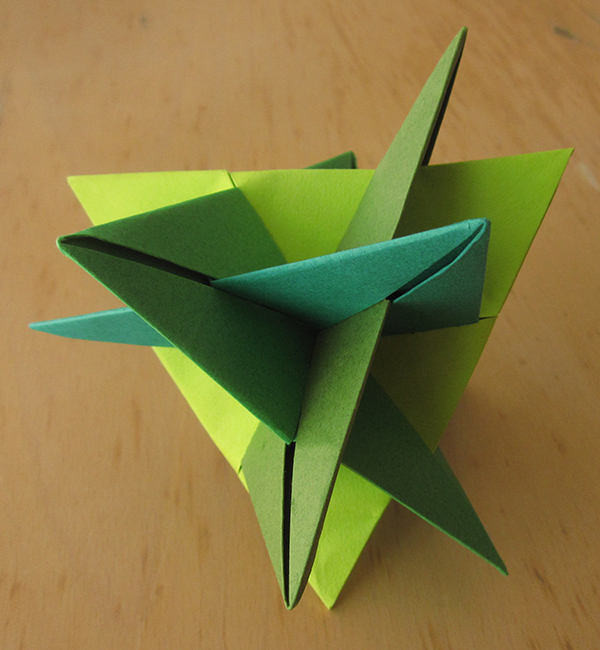
Knotted Toroid, designed by me. Based on Thoki Yenn’s Umulius.
Although this blog has a standing ban on nontrivial knots, this piece of origami defies the ban because it knows it can get away with it.
I have two comments on this model. First, I’ll explain how the choice of paper presents a philosophical problem. Second, I’ll talk a bit about the inspiration for the model.





 Bellflowers Ball, by Yuri Shumukov
Bellflowers Ball, by Yuri Shumukov